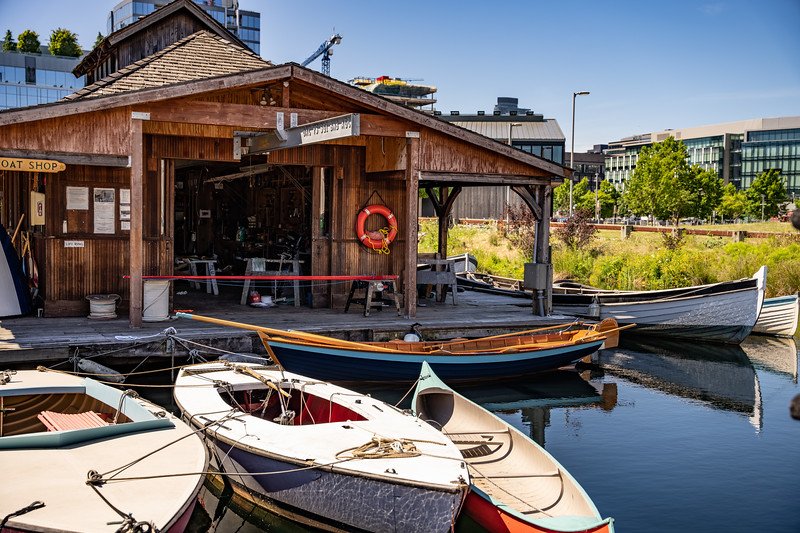We are now a Historical Landmark!
The Center for Wooden Boats is now a Landmark as designated by the City of Seattle. This includes the floating structures of our South Lake Union home (also known as Waterway 4) and The Old Boathouse (also known as the Wagner Floating Home).
We are incredibly grateful to our community for writing to the Board on our behalf, and to those who gave testimony during the hearings. A special thank you to Sarah Martin for her tireless research and expertise. Application was made possible with support from 4Culture.
Learn about the Landmark designation, how it came to be and what it means for us in this short video produced by CWB volunteer Shelley Sabin.
By designating our floating structures as historical landmarks, we will be able to secure the preservation of our history and continue to share the space for one and all.
The Center for Wooden Boats’ South Lake Union campus developed over many years following a clear plan and vision championed by co-founders Dick and Colleen Wagner. The story is one of persistence and dedication in pursuit of connecting the public with the water and traditional wooden boats.
Join Sarah Martin, a public historian specializing in architectural history and the built environment, as she presents on the history of the CWB. She will report on her recent research for landmark applications that she produced for the CWB and the Wagners’ floating home.
The applications are sponsored by the CWB, the Wagner family, 4Culture, and Historic Seattle.
What is a Historical Landmark?
The City of Seattle’s landmark designation criteria listed below range from broad to specific, and a property must meet at least one criterion to be designated. A property may be designated for its associative significance and/or its physical qualities.
The Landmarks Preservation Board will consider all designation criteria when evaluating the Center for Wooden Boats application. The property’s nomination report demonstrates the Center’s associative and physical significance, so several criteria will be up for discussion.
A. It is the location of, or is associated in a significant way with, a historic event with a significant effect upon the community, City, state, or nation; or
B. It is associated in a significant way with the life of a person important in the history of the City, state, or nation; or
C. It is associated in a significant way with a significant aspect of the cultural, political, or economic heritage of the community, City, state or nation;
D. It embodies the distinctive visible characteristics of an architectural style, or period, or a method of construction; or
E. It is an outstanding work of a designer or builder; or
F. Because of its prominence of spatial location, contrasts of siting, age, or scale, it is an easily identifiable visual feature of its neighborhood or the city and contributes to the distinctive quality or identity of such neighborhood or the City.

